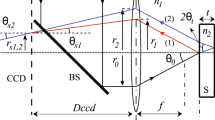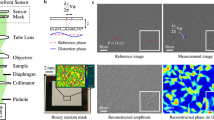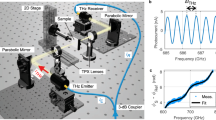Abstract
THE optical path difference (OPD) between an object and the surrounding medium, as measured with a transmission interference microscope using axial illumination, is given by  where T is the thickness of the object, and μ0 and μm are the refractive indices of the object and medium, respectively.
where T is the thickness of the object, and μ0 and μm are the refractive indices of the object and medium, respectively.
This is a preview of subscription content, access via your institution
Access options
Subscribe to this journal
Receive 51 print issues and online access
$199.00 per year
only $3.90 per issue
Buy this article
- Purchase on Springer Link
- Instant access to full article PDF
Prices may be subject to local taxes which are calculated during checkout
Similar content being viewed by others
References
Barer, R., The Interference Microscope in Quantitative Cytology (C. Baker of Holborn, Ltd., 1956).
Ingelstam, E., Exp. Cell. Res., Supplement 4, 150 (1957).
Barer, R., in Physical Techniques in Biological Research (2nd ed., Vol. IIIA, edit. by Pollister, A. W.) (Academic Press, London, 1966).
Allen, R. D., and Brault, J. W., in Advances in Optical and Electron Microscopy (edit. by Barer, R., and Cosslett, V. E.) (Academic Press, London, 1966).
Dyson, J., Nature, 203, 1300 (1964).
Smith, F. H., J. Roy. Micros. Soc. (in the press).
Author information
Authors and Affiliations
Rights and permissions
About this article
Cite this article
GOLDSTEIN, D. New Method of Thickness Measurement with the Interference Microscope. Nature 213, 386–387 (1967). https://doi.org/10.1038/213386a0
Received:
Revised:
Issue Date:
DOI: https://doi.org/10.1038/213386a0
Comments
By submitting a comment you agree to abide by our Terms and Community Guidelines. If you find something abusive or that does not comply with our terms or guidelines please flag it as inappropriate.



